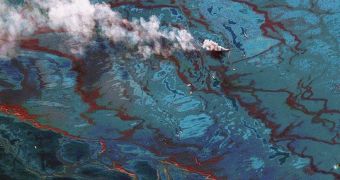BP is drilling a relief well to intersect the runaway well that has been spilling oil since April. It will be used to pump heavy drilling mud and cement into the broken well, to stop the gusher. The crucial matter now is to drill the relief well vertically and to make sure that it will hit the small cashing pipe, of only 17.78 cm at almost 5 km underground.
Drilling perfectly vertically is in itself a problem. The ground's resistance depends on the various rock formations, and the drill's bit will naturally follow the path with the least resistance. Drillers need extremely precise information about the soil in which the well in being drilled, because the rotating bit and its cutting end tend to deviate from an originally established course. Aravindh Kaniappan, a product manager for Baker Hughes, a drilling equipment and services company, says that “the challenge is not to get it to bend... it's to get it not to bend”. The task is even more difficult as no Global Positioning System satellite can reach this subterranean environment.
The first relief well is currently about 20 feet horizontally and less than 1,000 feet vertically from the interception point and the project's estimated completion date is early August. A second relief well will be drilled as backup, in case the first one fails to reach its target.
BP is supported by Baker Hughes and other companies like Halliburton, Schlumberger and Vector Magnetics, that help it reach the target by providing techniques and tools for surveying and measuring the relief wells as they are being drilled. This helps the steering of the drill in the right direction. They use sophisticated accelerometers and magnetometers that indicate the angle of the hole, sending the data back to the drill rig as binary pulses in the drilling mud that circulates through the drill pipe. If the drill bit has strayed, it can be steered back on course by using pressure pads against the well bore to change the bit’s direction.
Thanks to the last 10 years of advancements in technology, drilling is much more precise, even at depths of over 18,000 feet. Hopefully the wells will be finished by August and the oil spill finally stopped.

 14 DAY TRIAL //
14 DAY TRIAL //